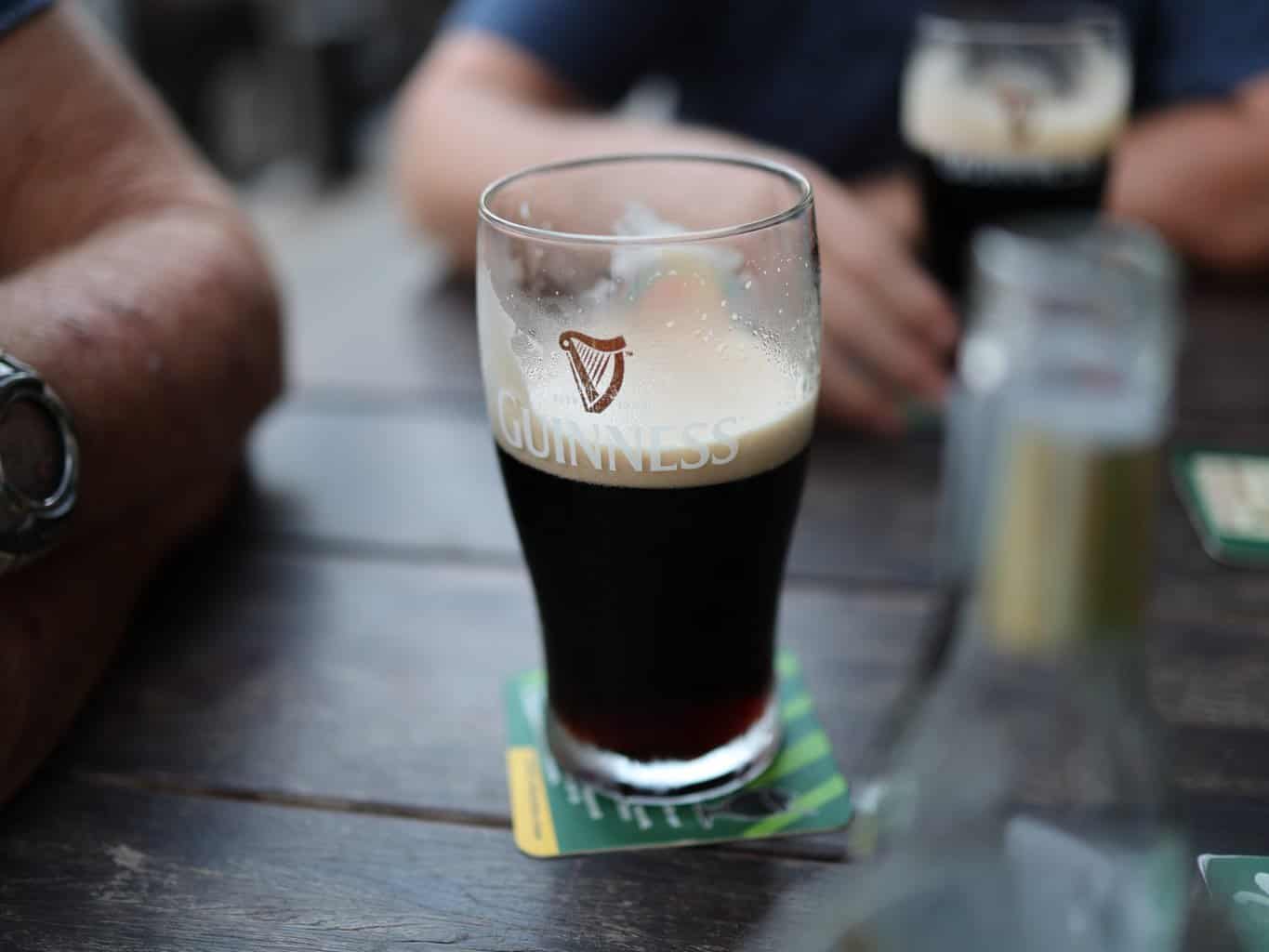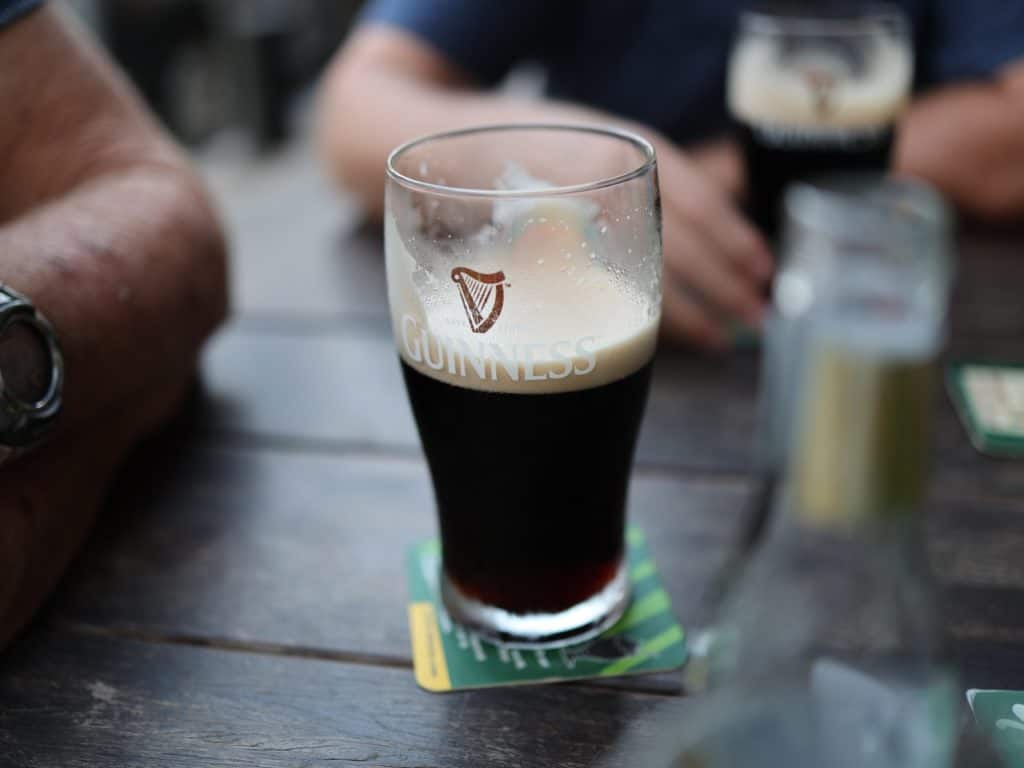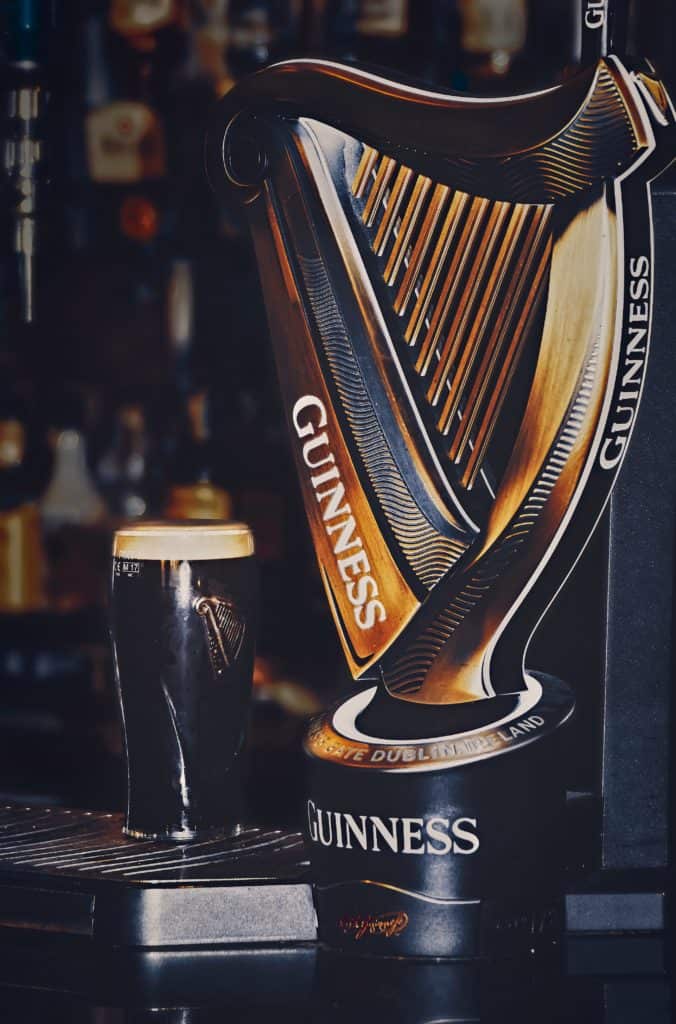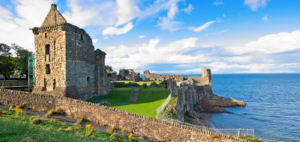The best Traditional Irish Drinks that you have to try!

Updated On: April 21, 2024 by Ciaran Connolly
If you’re looking for traditional Irish drink recipes for St Patrick’s day or want to try a traditional Irish drink when visiting Ireland, we have got you covered!
One of the first things people will recommend to do in Ireland is usually to visit a traditional Irish pub or bar. Irish pubs have historic value, are tourist friendly and usually offer great food and live music, however most importantly, the quality of the alcohol itself is held to a high standard in Ireland.
So the real question is what drink should you try in a traditional Irish pub? Many people want to avoid ordering their usual when travelling in favour of something more exotic, or in this case ‘more Irish’. You should take advantage of the opportunity to try out traditional Irish drinks, as you may enjoy the experience.
Pub culture is an important part of life in Ireland. In the past, the weekend pub visit was the main form of entertainment for adults, offering a chance to gather as a community and socialise after a week of hard work.

As this article is covering traditional Irish alcohol drinks, it is intended to be read by an audience over 18. If you want to find out more information about alcohol consumption and guidelines in Ireland you can check out drink aware.
Guinness – Traditional Irish Drink
Starting off our list is the most popular and iconic traditional Irish drink, the humble pint of Guinness. You can’t go wrong with a good pint of Guinness in Ireland. While stereotypically associated with old Irish folk hunched on bar stools in dark pubs, this couldn’t be further from the truth. In reality Guinness is a popular modern drink enjoyed by adults young and old.
Guinness is an Irish dry stout that has a unique taste which derives from malted barley. The draught beer has a thick creamy head which compliments its sharp tang. Guinness on draught (from a keg/barrel) tastes very different to a bottle or can.
Many tourists claim that Guinness in Ireland just tastes better than in pubs abroad. It could be because it is brewed in Dublin and that the kegs are used up so frequently which means that you are more likely to get a fresh pint of Guinness in Ireland.
It is true even here in Ireland that all Guinness is not equal. Some pubs have a reputation for a great or terrible pint. This is similarly due to the frequency of kegs changed and pipes cleaned, as the alcohol itself is produced the same way for every batch.
While researching various drinks for this article, I came across a few Guinness combinations that were popular in the past. To be honest, Guinness is a drink that doesn’t need any additions (at least in my opinion!), but why not try these drinks for yourself if you are curious.
Guinness and champagne (Black Velvet Cocktail)
Apparently Guinness and champagne is a thing, albeit one that I have not seen anyone drink in Ireland! The Black Velvet cocktail is an easy one to make though; simply mix equal parts Guinness and champagne in a flute glass and try it for yourself. According to the Guinness website, the cocktail is over 160 years old.
The history of the Black Velvet Cocktail goes back to London in 1861. At the time the country was mourning the death of Queen Victoria’s husband, Prince Albert. The drink was thought to symbolise the black armbands worn by mourners and it was allegedly said that ‘even the champagne was mourning’. Nowadays the drink is rare, but it is not associated with mourning.
A brief history of the creation of Guinness
Guinness was created in 1755 after Arthur Guinness founded the Guinness brewery. Guinness was not only an innovator in his field of brewing alcohol and international trade, he also was generous to the poorer people of Ireland. He saw Guinness as a healthier and higher quality form of alcohol to consume as opposed to hard liquors that were common among the poorer classes in society.
Guinness also started the ‘Arthur Guinness Fund’ which saw him donating to charities and attempting to improve healthcare. He was also a supporter of the Catholic Emancipation Act in 1793.
After his death, his employees were well looked after, receiving healthcare and pension benefits as well as wages 10-20% higher (on average) than the majority of jobs in Dublin during the 19th and 20th century. There was even a beer allowance for employees over 21!
Did you know that Arthur took out a 9000-year lease on the brewery? You can read more about Arthur Guinness in our dedicated blog to the inventor of Ireland’s favourite pint.
Guinness and blackcurrant
Guinness and blackcurrant is a classic combination for those who aren’t a fan of the bitterness of stout. The sweetness of the blackcurrant balances out the stout. In the past it was said to be a popular drink for women and younger men before ‘graduating’ on to a classic pint of Guinness. Traditionalists may say that you shouldn’t mix anything with Guinness, but at the end of the day if you are the one paying for your pint, order whatever you prefer!
Irish Whiskey – Traditional Irish Drink
Just as we have garnered a reputation for great Guinness, Ireland has also gained popularity for its whiskey.
Jameson is probably the Irish whiskey that you are most familiar with. It is tripled distilled and aged for a minimum of 4 years which gives the whiskey its signature smooth taste.
You can enjoy the whiskey anyway you want: neat, on ice, with a mixer or as part of a cocktail.
Powers and Bushmills are other Irish whiskies that we love which are very popular in Ireland. When it comes to choosing which whiskey is right for you, it all comes down to personal taste and budget. There are plenty of high quality whiskeys available for a decent price.
Two traditional Irish drinks made using whiskey are described below:
Hot Toddy Recipe
Some Irish people swear by drinking a Hot Toddy when sick with the cold. In fact, some of these Irish people only drink whiskey when they are sick. We have included a recipe below which is also nice on a cold winter’s night.
To make a Hot Toddy you will need (serves 2):
- 50ml whiskey
- 3 tablespoons of honey
- 2 cloves
- lemon, half sliced, half juiced
- 1 cinnamon stick (optional)
Directions:
- Mix honey and whiskey together and pour into two heatproof glasses
- Add half a cinnamon stick to each and pour in 200ml boiling water.
- Add some lemon juice. You may wish to add some sugar to taste.
- Add in your clove and a slice of lemon.
- Enjoy!
Honey, Cloves and Cinnamon are all known to have beneficial effects during the winter months and cold season. Whiskey and hot beverages in general are said to be good decongestants, so maybe there is more truth to the old wives tale than you may think. In any case, a whiskey will help to warm you up – just make sure you are not taking any medicine as it can be very dangerous. If in doubt opt for an alcohol free hot chocolate or traditional Irish mug of tea!
Irish Coffee Recipe
Recipe via BBC good food. Irish coffee is the perfect decadent finale to any special meal. Sweet, sharp and delicious there is plenty of room to make an Irish coffee your way!
Ingredients:
- 2 teaspoons whipped cream
- 150ml brewed black coffee
- 50ml Irish coffee
- 1 teaspoon sugar
- grated nutmeg / chocolate
Baileys – Traditional Irish Drinks
Baileys original Irish Cream Liqueur is a drink for special occasions and is usually enjoyed on days of celebration, such as Christmas day and Saint Patrick’s day.
Fine Irish Whiskey and spirits, Irish dairy cream, chocolate and vanilla flavours are combined to create a deliciously rich drink. It is the perfect way to end a meal or a special nightcap to end a memorable day.
Baileys is quite a versatile drink, it can be enjoyed neat, over ice, added into cocktails, and is even used in deserts. While the original baileys is the one we are discussing on this list, there is also a vegan option made with almonds for anyone with special dietary requirements who would like to try the cream liquor.
The best way to enjoy a Bailey’s in my opinion is in a hot drink. We have gathered these recipes from the official baileys website. You can see more recipes for delicious desserts and inventive drinks on their website.
Baileys hot chocolate Recipe
To make a traditional baileys hot chocolate you will need the following ingredients:
- 50ml Baileys Original Irish Cream
- 200ml milk
- 2 tbsp Cocoa Powder
- Whipped cream
Allergies: dairy
Directions:
- Add cocoa powder and warm milk to a cup and stir until combined.
- Add the Baileys and mix well
- Finish with a dollop of whipped cream on top and add some chocolate shavings or marshmallows on top.
Bailey’s Coffee Recipe
If you enjoy an Irish coffee, you may also like Bailey’s coffee, a creamier version of the alcoholic drink. To make a Bailey’s coffee, you will need:
- 50ml Baileys Original Irish Cream
- 150ml coffee
- Whipped cream/Chocolate sprinkles
Allergies: dairy/milk
Directions:
- Make a heat proof glass or mug of 150mlblack coffee
- Add the Baileys and stir
- Add whipped cream and/or sprinkles on top
- Enjoy!
Baby Guinness
Baby Guinness is a shot that resembles (you guessed it) a pint of Guinness. It is made of 3 parts coffee liqueur, such as Kahlúa or Tia Maria and 1 part Bailey’s cream liqueur. So there is actually no Guinness in the shot.
Poitín – Traditional Drink in Irish history
Poitín (also anglicised as poteen or potcheen) is a traditional Irish drink that has been brewed throughout history. Sometimes known as ‘Irish moonshine’ or ‘mountain dew’, the drink was often made from potatoes and other starchy ingredients.
Poitín production dates back for centuries, it was made on farms using starchy ingredients that were available. Poitín became illegal in 1661 as it was difficult to tax, but this did not stop the production of the alcohol.
The dangers of Poitín can’t be understated when speaking about alcohol. Poitín has a percentage of anywhere from 40% to an alarming 90% ABV. Considering the average pint is 5%, and vodka is 40%, this is quite shocking. The potency of homebrews may be underestimated which can and has led to fatal accidents in the past.
It was only re-legalised in 1997, but it never stopped being produced. Families would have good reputations for their alcohol production, but as one bad batch could be fatal, they could lose their business overnight.
In 2015 Poitín received recognition of its Geographical Indicative Status by the Irish government, essentially stating that poitín has to be produced in Ireland to be considered poitín, similar to the area which produces champagne in France.
In all cases, this is one drink that you should not try, unless produced and sold legally, and even then, at your own risk.
Other uniquely Irish drinks

Smithwick’s Red Ale
Smithwick’s is an iconic Irish beer brand that combines everything good about Irish beer without the heaviness of stout. The red ale is quite popular in Ireland.
Pint of Special
If you are in the west of Ireland, why not ask for a ‘pint of special’. This is a pint of Smithwick’s with a creamy Guinness head on top. It is a very popular drink in some regions in the West of Ireland, but other places won’t know what you are talking about!
Cider
Cider is also very popular in Ireland. Bulmer’s (known as Magners in the UK) is probably the most well known cider. Other popular brands include Orchard thieves (part of the Heineken company), Rockshore cider (part of Guinness Ltd.) and Kopparberg (brewed in Sweden). Ice cold cider is enjoyed by many in Ireland on a warm summer’s day.
The Most popular traditional Irish drink – Tea
The traditional Irish drink that is enjoyed more than any other is the simple cup of tea. It is not unusual to drink tea multiple times a day in Ireland; boiling the kettle is the first thing many people do in the morning, while others swear that they can’t sleep without a cuppa. More enjoy a cup of tea after dinner and others will bring a flask wherever they go! You are guaranteed to be offered a mug of tea in any Irish home you visit.
In Ireland, the phrase ‘I’ll boil the kettle’ is a suitable response to any form of news, good or bad. It is a habit like no other, but everyone has their own method to make the best cup of tea. From the brand used, to the order of ingredients added and the use of tea bags versus tea leaves there is much to be decided.
Of course there is also the age-old question of how long to leave the tea bag in the water or if you should remove it at all – there really is an art to tea making in Ireland! Nowadays tea is enjoyed with biscuits or pastries, but back in the day it was usually accompanied by homemade soda bread or barmbrack.
I think the significance of tea goes back to times when poor people had very little money or possessions. When people had nothing else, they could offer their neighbour a mug of tea, it was something that brought communities closer together. So the offer of a mug of tea is really a symbol of hospitality in its most sincere form and a tradition that we hope continues for many more years.
Final Thoughts:
We hope you have enjoyed our article about famous traditional Irish drinks. Have you tried any of these drinks before? Why not check our regional guide to 80 of the best bars in Ireland, city by city so you are prepared for your next trip to Ireland!
If you did enjoy our article about traditional Irish drinks you may like learning about other aspects of Irish tradition, including:
Irish tradition: Music, Sport Folklore & More | Irish Halloween traditions | Saint Patrick’s Day traditions | Traditional Irish Food






